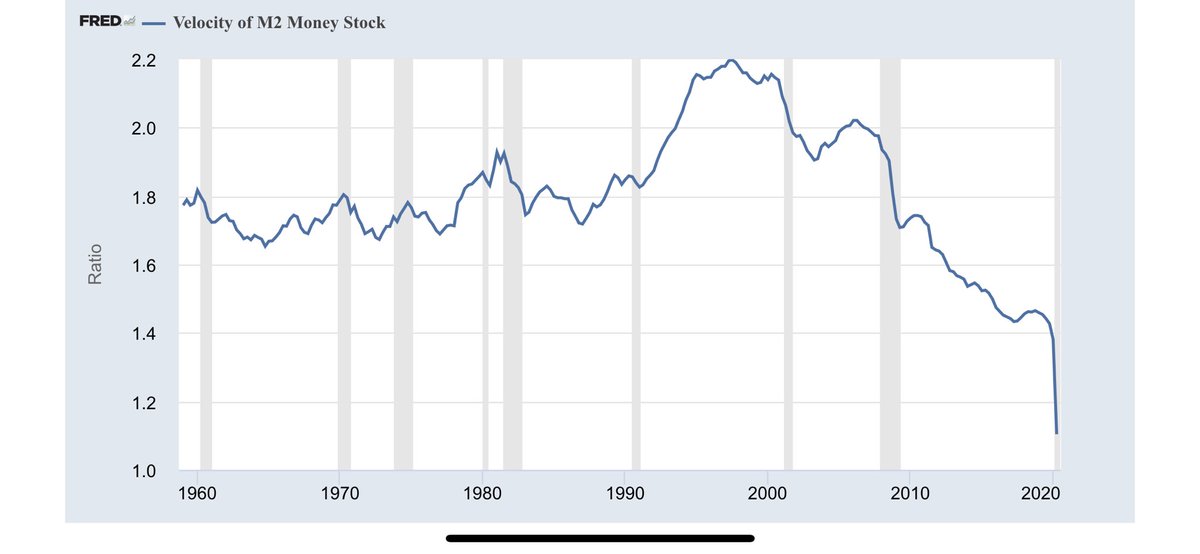
1- Great chart. Deflationary downdrafts will not be extinguished, but throughout history, inflation is quite consistent.
Note also that each low on the chart is higher than the previous, and so is each high.
Note also that each low on the chart is higher than the previous, and so is each high.
https://twitter.com/jam_croissant/status/1315425027370692610

2- Inflation persists throughout history for a number reasons. One important reason is that the structure of democracy is conducive to it, esp. as people figure out they can ‘vote themselves money’ and the inflation tax becomes a transfer mechanism for public demands.
HT @hkuppy
HT @hkuppy
https://twitter.com/hkuppy/status/1315129652420259840
3- Inflation is also the political path of least resistance, especially when governments around the world are saddled with gargantuan deficits and even larger debt-piles.
Think about it. Much easier to conjure endless trillions from thin air than to default on social security...
Think about it. Much easier to conjure endless trillions from thin air than to default on social security...
4- That, of course, is not to say history is free of bouts of sharp and rapidly falling prices.
The problem is that today, Keynesians rule, and they don’t distinguish between falling prices (good) and a decrease in the money supply (bad). They consider both “deflation”.
The problem is that today, Keynesians rule, and they don’t distinguish between falling prices (good) and a decrease in the money supply (bad). They consider both “deflation”.
4A- So when prices fall due to advances in productivity, they respond by firing up the printing presses, since they misplace their fear of a decrease in money supply (which can feed on itself in a deflationary spiral) for falling prices (which are healthy & wholesome).
4B-As a result of the printing, inflation creeps up in financial assets and real estate, but also other interesting places...
HT to @hkuppy again:
HT to @hkuppy again:
https://twitter.com/hkuppy/status/1315134726085242886
5- Another important factor is the manner in which money is created and distributed. We’re now entering a regime change, shifting focus from monetary measures to the more inflationary fiscal actions that put newly printed money directly into the hands of businesses & consumers.
https://twitter.com/bvddycorleone/status/1315112025845047303
6- In the end, of course, we’re gonna print until our faces fall off. I don’t know which paper currency will be the last one standing, but unless some other force collapses this house of cards sooner, they’ll all fall. 

7- So, my friends, in the meantime, let’s focus on predicting the inflationary cycles to the best of our ability, seeing the writing on the wall, and preparing our PFs accordingly.
HT @jam_croissant @hkuppy @profplum99 @RaoulGMI @pineconemacro @coloradotravis @SantiagoAuFund @RudyHavenstein @LukeGromen @GeorgeSelgin.
As always I welcome and appreciate thoughts/criticisms/feedback.
As always I welcome and appreciate thoughts/criticisms/feedback.
• • •
Missing some Tweet in this thread? You can try to
force a refresh




